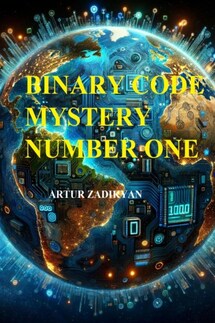Binary code: Mystery number one - страница 2
In fact, the bulk of information was obtained from open sources. In the West, it was easy to do this, you could even brazenly collect information under the guise of a good, professional activity. In Russia, especially in the USSR, for this, at best, you could be "sent to the zone". But there everything was simpler. For example, there was a case that Rutra was told about by his guru during his internship in the United States.
In the 1970s, law school graduate James Bamford was bored with practicing law, so he chose the profession of a reporter and worked as a detective in a private detective agency. The idea to write a book about the NSA came to the journalist in 1979, when he noticed that there are many books on the Central Intelligence Agency, but there is almost nothing about the National Security Agency.
In those days, the vast majority of Americans had no idea that such an intelligence agency existed. Nor had they heard of it at Houghton Mifflin, where Bamford approached with his proposal. However, the assertive reporter believed, gave an advance of 7,500 dollars and a term of three years. As Bamford later recalled, his legal education and experience as a detective helped him enormously in the process of writing The Palace of Mystery.
Bamford began his search by reading everything he could find about the NSA in public libraries. But that turned out to be negligible. Since data on NSA personnel and facilities were missing from official Pentagon directories, Bamford began digging up related reports and records of congressional hearings. In notes to the reports of Sen. Frank Church's committee investigating the intelligence community in the mid-1970s, Bamford found references to dozens of specific documents. These documents became the basis for his first three-page Freedom of Information Act-FOIA request to the NSA. It was immediately discovered that the NSA was almost entirely exempt from FOIA under an earlier law protecting the organization from any attempt to disclose its activities. So Bamford's first request was rejected outright.
Not the least bit embarrassed, the journalist went back to the library vaults. A comprehensive list of telephone numbers of U.S. military installations around the world gave no information as to which numbers might correspond to secret NSA radio interception posts. The Senate subcommittee reports dealing with military construction funding were carefully scrubbed clean of any reference to NSA facilities. However, the incurious Bamford noticed that when a secret base decided to build a court or basketball court, the requests were unclassified and showed up in the committee reports. By cross-referencing between military telephone directories and such requests, as well as similarly unremarkable data, Bamford was able to compile a nearly complete list of radio intercept sites in the NSA's global network.
At the same time, the journalist began searching for personal documents of employees of the U.S. radio-intelligence community.
A number of other important sources of information were found in the library.
From these documents, in particular, it was clear that the NSA, which as a foreign intelligence agency is not officially authorized to engage in eavesdropping on U.S. communications systems, does so through cooperation with foreign allies conducting radio intercepts on U.S. soil.









